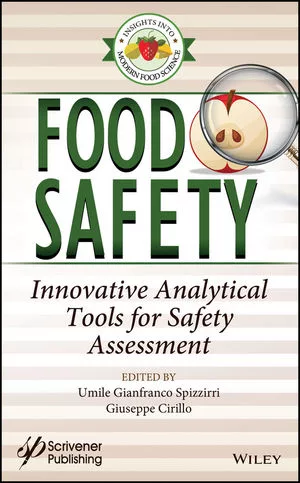USDA Study: Web-based Survey on Food Safety Behaviors and Consumer Education

The U.S. Department of Agriculture Food Safety and Inspection Service (USDA FSIS) has released survey findings based on the third iteration of a five-year annual study. This iteration included the first of two web-based consumer surveys.
Web-based Survey on Food Safety Behaviors and Consumer Education
The first iteration of FSIS’ web-based survey of U.S. adults collected information on a variety of topics, including consumer use and satisfaction with the USDA Meat and Poultry Hotline, awareness of and response to food recalls, awareness of and understanding of foodborne illness outbreaks, and food safety behaviors related to grilling and serving food buffet style.
USDA FSIS contracted with RTI International and its subcontractor, North Carolina State University to also conduct consumer behavior research to understand specific consumer food safety behaviors, to inform FSIS’ consumer outreach efforts, and to determine the effectiveness of behavior change interventions. The following describes the results of the first iteration of the web survey. The web-based survey of U.S. adults collected information on a variety of topics, including consumer use and satisfaction with the USDA Meat and Poultry Hotline, awareness of and response to food recalls, awareness of and understanding of foodborne illness outbreaks, and food safety behaviors related to grilling and serving food buffet style.
The population for the study was the U.S. general population of adults who are members of the KnowledgePanel, a probability-based panel designed to be nationally representative. Data collection took place over a two-week period in November and December 2019. Analysis weights were developed and applied to develop weighted survey estimates so that the results are representative of the U.S. general population of adults (18 or older) who prepare and cook meals at home four or more times a week and have prepared raw meat or poultry in the past 30 days.
Key Findings
- Respondents’ Preferences for Receiving Information on Food Safety - Respondents would like to receive food safety information from food labels, websites (excluding social media), cookbooks, television, and apps on smartphones or tablets.
- Respondents’ Response to the USDA Meat and Poultry Hotline - About 12 percent of respondents were aware of the USDA Meat and Poultry Hotline. Among respondents who had contacted the hotline, most did so for questions related to food preparation or about a food recall and reported being satisfied with the information they received. The majority of respondents were unaware of the hotline (88 percent). Among those unaware, 30 percent reported that they would be likely to contact the hotline with questions on food preparation. Preferred methods for contacting the hotline were by phone, followed by email and online chat. The most convenient times to contact the hotline were between 4:00 and 8:00 p.m. Eastern Time.
- Respondents’ Experience with and Response to Food Recalls - About 78 percent of respondents recalled hearing about 10 or fewer recalls in the past 6 months (June 2019 – December 2019), which is much lower than the actual number of recalls (around 200 total recalls at either the national or state levels), suggesting that respondents do not have recall fatigue. Respondents’ sources for learning about the last recall were local television or radio news, national television or radio news, and social media. Few respondents heard about a recall through government alerts or press releases. In response to a recall, respondents most often checked to see if the food was in their home. If respondents had the recalled food, 94 percent followed the correct call to action to discard or return the recalled food to the store.
- Communicating Information on Food Recalls to Consumers - Trusted sources for information on food recalls include local television or radio news; government website, alert or press release; grocery stores; and national television or radio news. Respondents have less trust in social media and nongovernment websites. Respondents viewed a mock FSIS-issued news release and were asked to identify which information is most important in helping them respond to the recall (half saw a news release about foreign object contamination, and half saw a news release about pathogen contamination). Across both recall news releases, the most important items of information respondents selected were type of food, where food was distributed, brands affected, and date and establishment or lot number on the packaging. The items of information that were selected the least often were total amount of food recalled and how the contamination happened.
- Respondents’ Awareness and Understanding of Foodborne Illness Outbreaks - When asked about the number of foodborne illness outbreaks they heard about in the past six months (June 2019 – December 2019), most respondents (73 percent) had not heard about any or had heard about one or two. The actual number of foodborne illness outbreaks reported by the Centers for Disease Control and Prevention (CDC) during the six months (June 2019 – December 2019) before the survey was 13, suggesting respondents did not hear about many of the outbreaks announced by CDC. To assess respondents’ understanding of foodborne illness outbreaks, we asked respondents three separate questions about when they believe the government announces a foodborne illness outbreak. In response to these three questions, about 26 percent of respondents indicated they do not know when the government makes an announcement. About two-thirds knew that the government announces a foodborne illness outbreak regardless of where the food was prepared and when anyone is affected, not just children and older adults.
- Respondents’ Self-reported Food Handling Practices for Grilling and Serving Food Buffet Style - About 72 percent of respondents cooked meat, poultry, or fish on an outdoor grill in the year proceeding their participation in the survey. Most respondents reported following one of the recommended practices for removing the cooked food from the grill the last time they grilled meat, poultry, or fish (98 percent). When taking the cooked food off the grill using a utensil, 73 percent of respondents reported following one of the recommended practices. The recommended practices are to use a different plate or utensil, or if using the same plate or utensil to wash or wash and then sanitize it before reusing.
- Nearly 60 percent of respondents hosted a buffet-style gathering in the year proceeding their participation in the survey. When serving hot foods, 34 percent of respondents indicated they followed the recommended practice — serve hot food in a container with a heat source. For serving cold perishable foods, about 16 percent of respondents said they followed the recommended practice — serve the food in a container or plate nested in a bowl of ice and store or discard the leftovers after 2 hours.
- Respondents’ or Households’ Experience with Foodborne Illness - Nine percent of respondents reported that they or someone else in the household had foodborne illness in the past year. Of these, 14 percent visited a health care provider because of the illness, and about two-thirds were diagnosed with foodborne illness. Nearly half (47 percent) of respondents believed they got sick from eating food at restaurants, and 22 percent believed they got sick from food prepared at home. Among those who believed they got sick from food prepared at home, 61 percent said they did not make changes to how they prepare or handle food at home. Of those who did make changes, the most common self-reported changes included cooking food longer or to very well done, no longer buying that product, and checking for spoilage sooner for stored foods.
See the entire 88-page final report at FSIS.USDA.gov.
Looking for quick answers on food safety topics?
Try Ask FSM, our new smart AI search tool.
Ask FSM →








